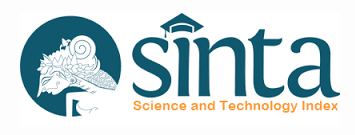PENERAPAN METODE QUANTUM HIJAIYAH DALAM MENINGKATKAN KEMAMPUAN BACA AL-QURAN KOMUNITAS MUALLAF DI KALIMANTAN BARAT
Abstrak
This research is entitled: "Application of the Quantum Hijaiyah Method in Improving the Ability to Read the Koran of the Muslim Community in West Kalimantan”. The purpose of this study is to guide the convert community (muallaf) to be able to read the Qur'an properly and correctly, equipping them with the ability to practice one of the teachings of Islam, namely to read the holy verses of the Qur'an in order to increase the spirit of converts in practicing Islamic teachings.The object of this research is the Muslim convert community (muallaf) in Senyabang Village, Sanggau District and the Muslim Community in Menjalin Village, Menjalin District, Landak Regency. This qualitative research model targets the social community as an active part of the research process, in order to increase the effectiveness of the data collection and analysis process to produce a recommendation that is truly beneficial for the improvement of the quality of their social life. The community-based research approach is more suitable if it uses an action research model, as applied research that requires dynamic and clinical trials. The results of the study were in the form of application a method of learning the Qur'an in an easier time with the Quantum Hijaiyah method. The training and development participants showed an increase in the mastery of reading hijaiyah letters and verses of the Qur'an during 19 hours of effective learning starting from pre-test, training and post-test activities. Increasing the reading ability of participants is proven by the results of tests and testimonials or acknowledgment from each participant who acknowledges the changes and improvement in the quality of reading the verses of the Qur'an.Referensi
Al-Maliki, Fayumi. (2011). Metode Talaqi, 3 Hari Pintar Membaca al-Quran. Jakarta: QultumMedia.
Arief, Armai. (2002). Pengantar Ilmu dan Metodologi Pendidikan Islam. Jakarta: Ciputat Pers.
Banks, Sarah. (2012). Community Based Participatory Research A Guide to Ethical Principles and Practice, Center for Social Justice and Community Action, Durham University, UK.
Hidayat, Arif. (2011). Cara Kilat Pandai Membaca Al-Qur’an. Jakarta: PT. Buku Kita.
Hidayat, Samsul (2015) Quantum Hijaiyah; Panduan Mudah dan Cepat Membaca al-Quran (19 Jam Bisa Baca al-Quran). Pontianak: IAIN Press.
_____________ (2017) Pengembangan Metode Quantum Hijaiyah Sebagai Teknik Cepat Baca al-Quran pada Masyarakat Muallaf d Masjid Muhajirin Desa Senyabang Kecamatan Balai Kabupaten Sanggau Kalimantan Barat, dalam Maju Bersama, Jurnal Pendidikan Agama Islam, Volume 9 Edisi Desember 2017.
Hine, Gregory S. C. (2013). The importance of action research in teacher education programs, dalam Design, develop, evaluate: The core of the learn in environment. Proceedings of the 22nd Annual Teaching Learning Forum, 7-8 February 2013. Perth: Murdoch University. http://ctl.curtin.edu.au professional_development/conferences/tlf/tlf2013/refereed/hine.html.
Mudhar, M. Ali. (2011). Membaca al-Quran itu Mudah Metode Al-Fatah. Kalasan: Kalasan Press.
Pasick, Rena. (2010). Geraldine Oliva, MD, MPH, Ellen Goldstein, MA, Tung Nguyen, MD, dalam Paula Fleisher, MA (Ed),Community-Engaged Research with Community Based Organization, Community Engagement Program. CTSI, University of California, San Francisco.
Rosyada, Dede. (2016). Community Based Research CBR) Salah Satu Model Penelitian Akademik. http://www.uinjkt.ac.id/community-based-research-cbr-salah-satu-model-penelitian-akademik/
Rosyady, M. (1999). An-Nur, InsyaALlah dalam 2 Jam Anda Sudah Bisa Baca al-Quran. Jakarta: Syiar Islam.
Rusmono (2012) Strategi Pembelajaran dengan Problem Based Learning Itu Perlu: Untuk Meningkatkan Profesionalitas Guru. Bogor: Ghalia Indonesia.
Sanjaya, Wina. (2007). Strategi Pembelajaran Berorientasi Standar Proses Pendidikan. Jakarta Kencana Prenada Media Group.
Yahya, M. Ashim. (2016). Metode Alhuda 5 Jam Bisa Baca al-Quran, Jakarta: Noura.
Once an article was published in the journal, the author(s) are:
granted to the journal right licensed under Creative Commons License Attribution that allows others to share the work with an acknowledgment of the work's authorship. permitted to publish their work online in third parties as it can lead to wider dissemination of the work. continue to be the copyright owner and allow the journal to publish the article with the CC BY license receiving a DOI (Digital Object Identifier) of the work.





